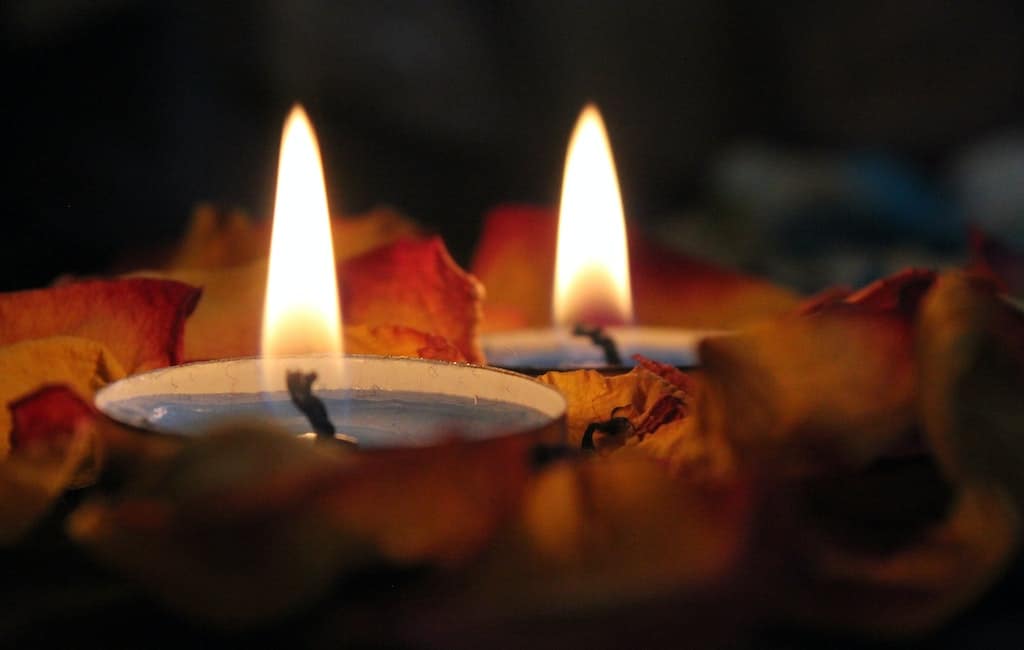Candle burning is fast becoming one of the methods of purifying air, or getting rid of stale, and unpleasant, scents. This is because of the wide popularity of scented candles, in aromatherapy. Candles are made up of two parts, which are; the candle wax and the candle wick.
Candle wax is the part of the candle that serves as the fuel source of the candle, because it is typically made of flammable materials, in a form that that remains solid at room temperature but can melt easily when subjected to the heat of a candle’s flame.
HOW ARE CANDLES FORMED?
Candles are formed when solid wax is melted (mixed with fragrance and dyes, when required) and poured into molds (along with the addition of wicks). The process of making candles is a very old act that is several thousand years old. Candles used to be the major source of indoor illumination until the electric light bulb was invented in the late 19th century. However, they are becoming popular once again.
History shows that when candles were first made, they were formed from the boiling down of tallow (which is basically rendered fat, derived from slaughtered cows and other livestock). The subsequent innovations in the field of candle making are a symbol of the massive creativity, which humans continue to display all through history.

- The creation of tallow candles
Tallow candles are some of the oldest forms of candles in existence (if not the oldest form of candles in existence). It originated thousands of years ago (around 500 B.C), when humans first started making dipped candles. The creation of this kind of candles marked a turning point in the history of candle making, which serves as one of the building blocks of the commonly known origins of candle making.
And though, the invention of tallow candles marked a sort of breakthrough in this field – and the candles themselves were very popular across the world, for a very long time – tallow candle continues to have a very interesting reputation; which is based on the fact that the candle itself is not the most efficient, as far as types of candles go.
Tallow candles are known to burn uncleanly, giving off significant amounts of soot, and fumes which carry the peculiar aroma of burning fat (as tallow is, in fact, rendered fat). Other reasons why tallow candles are some of the least efficient forms of candles include the following; their wax structure is not very solid, and so tallow candles melt more easily and faster than some other forms of candles. Also, tallow candles are somewhat difficult to make compared to some other types of candles (e.g. paraffin wax candles).
- The creation of beeswax candles
Beeswax candles are most notably, the best kinds of candles known in the world. Not only do they have a solid wax structure (which makes them last much longer that other forms of candles), they also burn very cleanly by producing little to zero soot. Beeswax also gives off a very pleasant aroma after being lit, unlike tallow wax that produces the smell of burning fat.
History shows that beeswax was first produced in the Han Dynasty (around 202 BCE to 220 AD), which is an ancient Chinese empire. And as a result of this candle’s properties and relative cost, it was the type used by elite statesmen and rulers of that era.
- The creation of soy wax candles
Another kind of candle wax, that people tend to talk about whenever they are discussing efficiency and high quality, is soy wax. The invention of soy wax candles took place in 1992, when Michael Richards first created it, in a bid to make a suitable (and more affordable) replacement, or alternative, to beeswax. Like beeswax, soy wax is a natural wax with a solid wax structure that burns cleanly. It is a type of vegetable wax that was formed from the hydrogenation of soy oil, palm oil and coconut oil. Sometimes, beeswax is also added to soy wax, in order to improve the quality of the resultant candle.

- The creation of palm wax candles
Palm wax is another type of candle material that is made from a vegetable base. Another name for it is carnauba wax, which is of notable quality in the sense that it has a relatively high melting point, as far as candles go (i.e. between 82 – 86 degrees Celsius, which is about 180 – 187 degrees Fahrenheit). Palm wax is also easy to dye, and it carries scents well (which makes it particularly suitable for making scented candles).
However, palm wax has been discovered to have negative effects on the environment (not because of the candles themselves, but because the process of utilizing palm trees in their creation is not environmentally sustainable).
- The creation of paraffin wax candles
Paraffin wax candles were first created in the 19th century by a German scientist names Carl Reichenbach. As a product, the commercialization of paraffin wax candles was hugely welcome by the global markets, since candles made from paraffin wax burned a lot more pleasantly and cleanly than tallow wax candles (which were very popular in that period).
Paraffin wax changed the game, as far as candle making is concerned, because they are much easier to create in factories, using molds, compared to tallow candles. They are also much cheaper than other types of candles (e.g. tallow and beeswax).
However, paraffin wax is petroleum-based, which means that the fumes produced from burning paraffin wax candles contain compounds that can be toxic to humans and the environment (when they are produced in large quantities).
DO CANDLES TAKE OXYGEN OUT OF AIR?
Apart from the possible effects candle may have on the environment, candles are also famous for taking oxygen out of the air, in order to support their combustion (since no flame – no matter how small – can burn in the absence of oxygen). Therefore the more a candle burns, the more oxygen is being used, and the more carbon dioxide and carbon monoxide will be produced. If there is no proper ventilation in a room, and candles are continuously burned there, all the oxygen in the room will eventually be used up.




